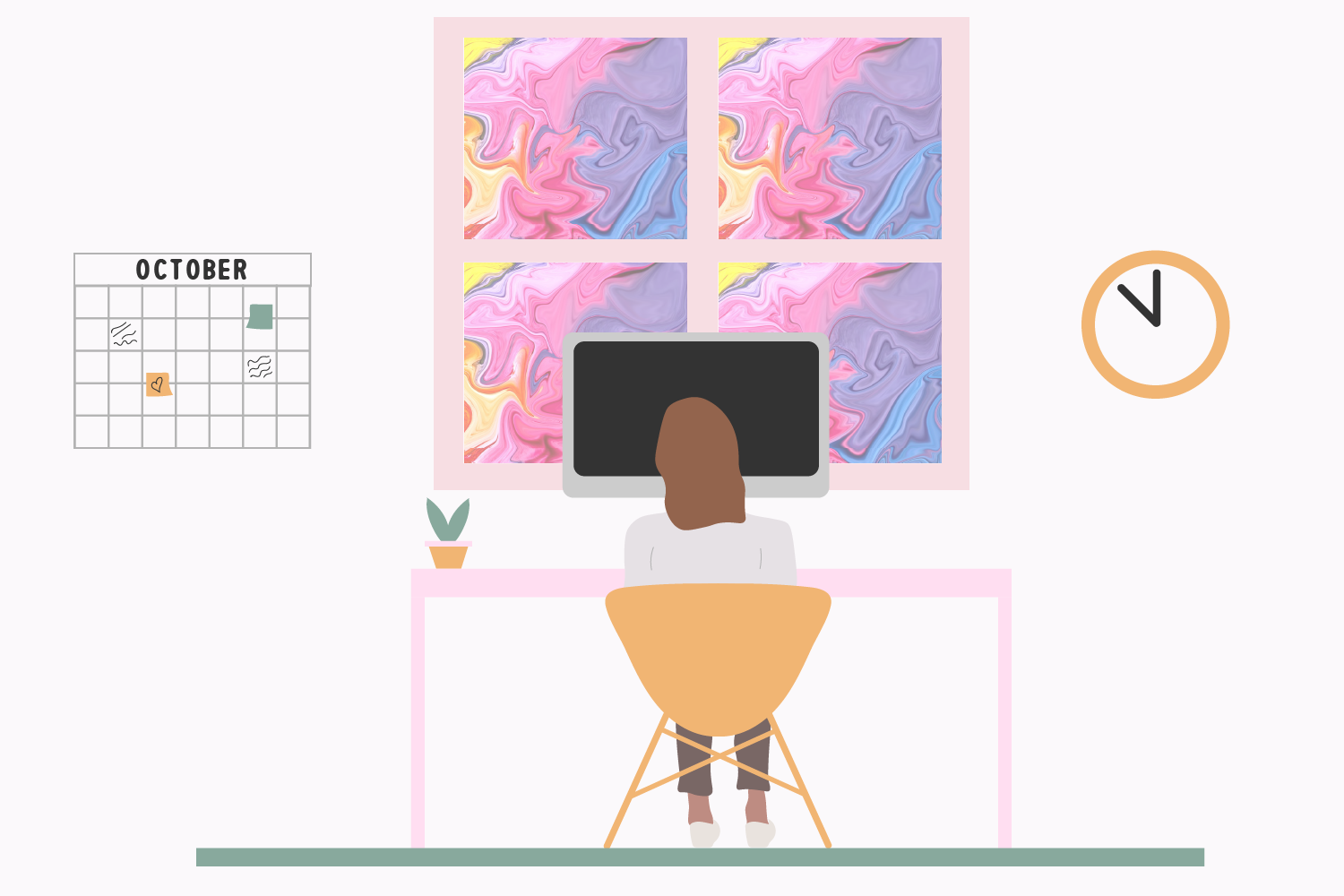
Posters. Tapestries. Photo boards. Some string lights, for good measure. Coming into college, transforming four unfamiliar walls into a new home using these staples of dorm decor had always felt like a given. But when I actually compiled my packing list during the last few weeks of August, this checklist of colorful wall coverings and personalized mementos was notably absent. With the uncertainty of how long we’d actually stay on campus heavy on my mind, I had felt obligated to pack lightly and precautiously, and that meant swapping out comfort items for that extra box of rubbing alcohol wipes.
Now, as we head into the second half of the fall semester with our campus open for hybrid learning and no sign of being uprooted yet, I can only say that I’ve gotten to know my undecorated dorm quite well. That’s not to say I haven’t made myself at home—the small mountain of disposable cutlery packets I’ve accumulated from the dining hall has strangely become a signpost for familiarity—but it does feel bleak to say that the most fascinating aspect of my naked beige walls is how they look strangely yellow after I’ve been staring at my laptop for too long.
However, as colder weather and rising COVID-19 cases draw out the time students are spending hunkered down inside, our rooms and homes are also playing a larger role in mental health. Namely, the difference between staring at a blank wall and being surrounded by posters or paintings goes far beyond an appreciation for the change in scenery. Nothing perhaps demonstrates this better than the body of research behind artwork in hospitals.
More than 40 percent of U.S. health facilities have programs that facilitate visual art collections and installation works, according to a 2009 report by Arts & Health Alliance, a Washington D.C.-based nonprofit. The Vanderbilt University Medical Center also has its own arts program, which maintains an extensive collection of roughly 2,500 artworks and offers therapeutic art opportunities for patients. These investments have emerged from a growing belief that displays of art are crucial in creating a healing environment. At the most immediate level, viewing paintings and photographs is a welcome distraction for patients that reduces anxiety and stress, all while boosting staff morale and making sterile, clinical settings feel familiar and welcoming.
While some research studies have concluded that art in these healthcare settings primarily promotes mental wellbeing without significant impact on a patient’s physiological recovery, other studies have found that seeing art can also positively affect health measures like pain tolerance and length of hospital stay. Notably, an experiment conducted by researchers at the University of Bari in Italy found that neurological pain signals were significantly reduced when subjects observed a painting they found aesthetically beautiful.
Although being quarantined in our rooms may not present the same emotional and physical vulnerabilities that patients recuperating in the hospital face, the combined effects of isolation and the anxieties we face as students can also lead to a difficult mental toll. With opportunities for get-togethers, new experiences and just getting that “breath of fresh air” still in flux, reconfiguring our living spaces with hospital art in mind can be a first step toward better self-care.
Specifically, there’s evidence that we perceive bright and saturated colors as the most pleasant. Blue and green wavelengths have also been found to induce pleasure, while red and yellow wavelengths are associated with a higher anxiety response. Accordingly, hospital patients often prefer landscape and nature images for a familiar, positive and calming view. Although some studies discourage displaying abstract art for sick patients to avoid unpleasant interpretations, research has also shown that positive engagement with abstract images can still improve the way a patient experiences time, safety, comfort and even their own identity.
But at the end of the day, what matters is ensuring that you spend your time in an environment that you find beautiful, interesting, calming or even just homely. Our needs as students won’t always match up with that of patients or even other students, and only you can know what makes you happy. Whether that means getting lost in the calm of a blue seascape, puzzling over an abstract tapestry, drinking in the sunny colors of fairy lights or something else altogether, the principle behind the healing power of art still stands: what we surround ourselves with has a profound impact on our wellbeing.
So come Thanksgiving break, spring semester and beyond, remember to prioritize the artistic liberties you can take with the spaces you’ll be spending the most time in. I know I will.





